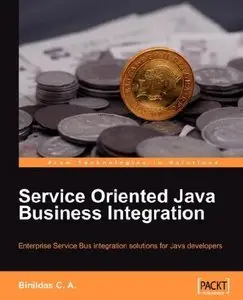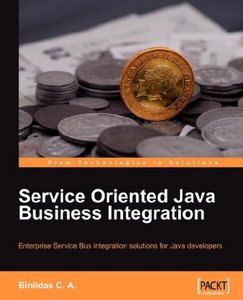Binildas A. Christudas, "Service Oriented Java Business Integration: Enterprise Service Bus integration solutions for Java developers"
Pa ckt Publ ishing | 2008 | ISBN: 1847194400 | 436 pages | PDF | 7,3 MB
Pa ckt Publ ishing | 2008 | ISBN: 1847194400 | 436 pages | PDF | 7,3 MB
The goal of Java Business Integration (JBI) is to allow components and services to be integrated in a vendor-independent way, allowing users and vendors to plug and play.
Java Business Integration (JBI) is a specification aiming to define a Service Provider Interface for integration containers so that integration components written for these containers are portable across containers and also integrate with other components or services using standard protocols and formats. JBI is based on JSR 208, which is an extension of Java 2 Enterprise Edition (J2EE).
This book first discusses the various integration approaches available and introduces the Enterprise Service Bus (ESB), a new architectural pattern that facilitates integrating services. ESB provides mediation services including routing and transformation. Java Business Integration (JBI) provides a collaboration framework that provides standard interfaces for integration components and protocols to plug into, thus allowing the assembly of Service-Oriented Integration (SOI) frameworks following the ESB pattern. Once JBI and ESB are introduced, we look at how we have been doing service integration without either of these using traditional J2EE. The book then slowly introduces ESB and, with the help of code, showcases how easily things can be done using JBI.
What you will learn from this book?
Assembling services and porting them across containers using JBI
Exposing EJB as a WSDL-compliant service across firewalls
Binding remote services to ESB to be consumed internally
Exposing local components in ESB like POJO as externally accessible WSDL-compliant services
Providing a web service gateway for external consumers
Accessing web services over a reliable transport channel like JMS
Implementing web service versioning using ESB
Implementing service aggregation at ESB
Transactions, Security, Clustering, and JMX in ESB



